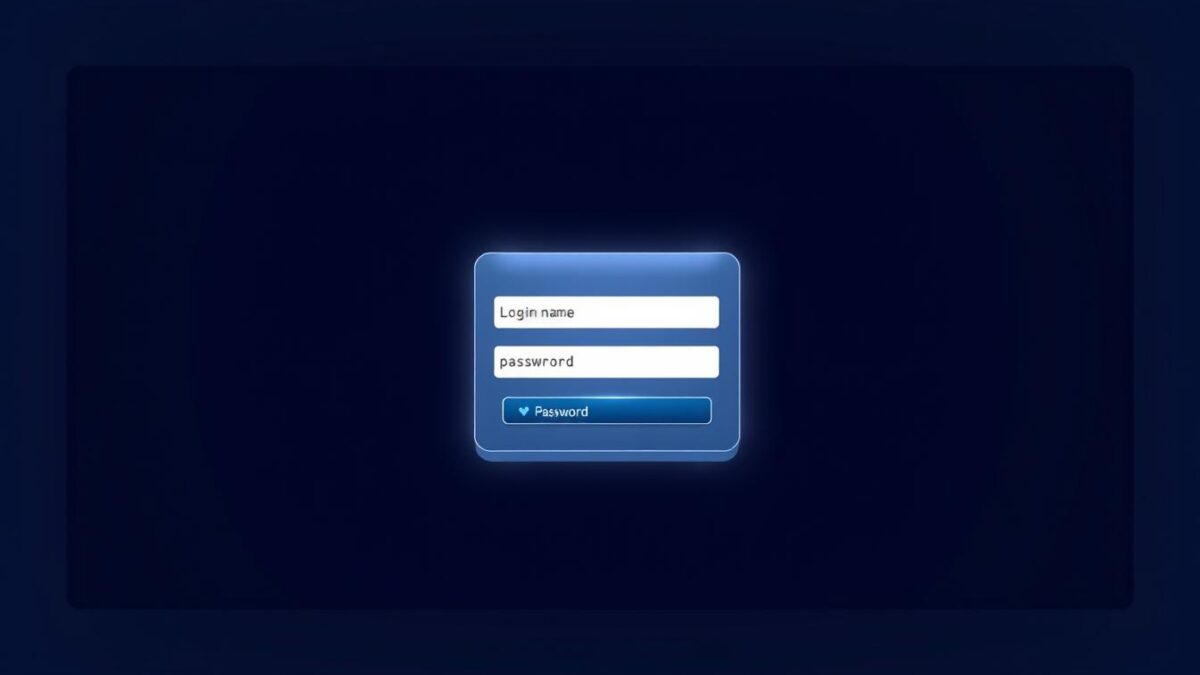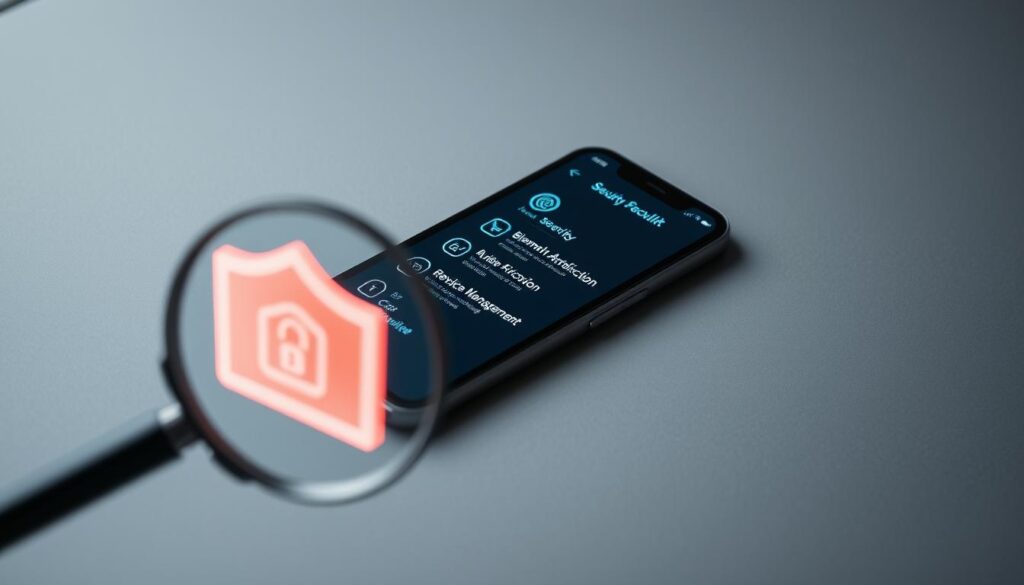
Secure Login: Protect Your Account
In today’s digital world, a secure login is crucial to safeguarding your online presence. With the increasing threat of cyber attacks, it’s essential to prioritize login security to protect your sensitive information. A secure login system serves as the first line of defense against unauthorized access, making it a vital component of your online security strategy.
A secure login is more than just a password; it’s a comprehensive system designed to ensure that only authorized individuals can access your accounts. By implementing robust login security measures, you can significantly reduce the risk of data breaches and cyber attacks, ultimately protecting your online identity and sensitive data.
By prioritizing secure login practices, you can enjoy greater peace of mind when interacting with online platforms, knowing that your login security is robust and reliable. In this article, we will delve into the world of secure login, exploring the importance of login security and the various methods you can use to protect your online accounts.
Introduction to Secure Login
With the rise of digital technologies, secure login has become a critical aspect of online security. By understanding the importance of secure login and implementing effective login security measures, you can significantly reduce the risk of cyber attacks and data breaches.
Key Takeaways
- Secure login is essential for protecting your online presence
- Login security is a critical component of your overall online security strategy
- Robust login security measures can reduce the risk of data breaches and cyber attacks
- Secure login practices can provide greater peace of mind when interacting with online platforms
- Implementing effective login security measures is crucial for safeguarding your sensitive information
Understanding the Importance of Secure Login Systems
As we navigate the digital landscape, it’s essential to recognize the significance of secure authentication and secure access to our online accounts. The threat of cyber attacks is on the rise, and insecure login systems can provide an entry point for attackers, resulting in devastating consequences.
In today’s digital age, secure authentication is no longer a luxury, but a necessity. With the increasing number of online transactions and sensitive information being shared, it’s crucial to ensure that our login systems are robust and secure. This can be achieved through secure access protocols, such as two-factor authentication and encryption, which can help prevent unauthorized access to our accounts.
Some common security vulnerabilities that can compromise our online security include:
- Weak passwords
- Outdated software
- Phishing attacks
These vulnerabilities can be exploited by attackers, leading to significant financial losses, damage to our reputation, and compromised sensitive information.
By prioritizing secure authentication and secure access, we can significantly reduce the risk of cyber attacks and protect our online accounts from unauthorized access. It’s essential to stay informed about the latest security threats and best practices to ensure our online security and peace of mind.
Essential Components of Login Security
When it comes to protecting sensitive information, user authentication plays a vital role in verifying the identity of users. This process ensures that only authorized individuals have access to the data, reducing the risk of security breaches. One of the critical components of login security is password protection, which provides an additional layer of security against unauthorized access.
A robust login security system should include multiple layers of protection, suchenha as multi-factor authentication and password managers. These tools help to strengthen the security of user accounts and prevent unauthorized access. Some of the key features of a secure login system include:
- Strong password policies
- Two-factor authentication
- Account lockout policies
- Regular security audits
By implementing these features, organizations can significantly reduce the risk of security breaches and protect their sensitive information. As we continue to rely on digital systems, the importance of user authentication and password protection will only continue to grow.
It’s essential to stay ahead of the curve and implement robust login security measures to safeguard against potential threats. With the right combination of user authentication and password protection, organizations can ensure the security and integrity of their digital systems.
Creating Strong Password Protocols
When it comes to secure sign-in, a strong password is the first line of defense. To create a robust password protocol, it’s essential to consider the length and complexity of passwords. A longer password with a mix of characters, numbers, and special characters can significantly reduce the risk of unauthorized access. Implementing two-factor authentication can add an extra layer of security, making it even more difficult for hackers to gain access.
A good password protocol should include regular password updates. This can be achieved by setting a password update schedule, ensuring that passwords are changed regularly. Special character implementation can also enhance password security. Using a combination of uppercase and lowercase letters, numbers, and special characters can make passwords more resistant to brute-force attacks.
Here are some best practices for creating strong password protocols:
- Use a minimum of 12 characters for passwords
- Include a mix of characters, numbers, and special characters
- Change passwords regularly, ideally every 60-90 days
- Implement two-factor authentication for an extra layer of security
By following these guidelines and implementing a robust password protocol, individuals and organizations can significantly reduce the risk of password compromise and ensure a secure sign-in process. Remember, a strong password is just the beginning – two-factor authentication and regular password updates are crucial for maintaining a secure online presence.
Two-Factor Authentication Explained
Two-factor authentication is a crucial component of secure login, providing an additional layer of protection against unauthorized access. This method requires users to provide two forms of verification, such as a password and a code sent to their phone, to access their account.
The benefits of two-factor authentication include enhanced login security, making it more difficult for attackers to gain access to sensitive information. There are different types of two-factor authentication, including:
- SMS-based methods, which send a code to the user’s phone
- Authenticator app-based methods, which generate a unique code for each login attempt
By implementing two-factor authentication, users can significantly improve the security of their online accounts and protect themselves against cyber threats. As part of a comprehensive secure login strategy, two-factor authentication is an essential tool for safeguarding sensitive information and preventing unauthorized access.
In today’s digital landscape, login security is more important than ever. By understanding the importance of two-factor authentication and implementing it as part of their online security routine, users can enjoy enhanced protection and peace of mind.
Biometric Authentication Methods
Biometric authentication is a secure and convenient way to accesslegate online accounts. This method uses unique physical characteristics to verify the identity of users, providing an additional layer of security against unauthorized access. With the rise of technology, biometric authentication methods have become increasingly popular, offering a more secure authentication process.
Biometric authentication provides secure access to online accounts, reducing the risk of unauthorized access. This method is more secure than traditional password-based authentication, as it uses unique physical characteristics that are difficult to replicate. Some of the most common biometric authentication methods include:
- Fingerprint recognition: This method uses fingerprint scanners to verify the identity of users.
- Facial recognition systems: This method uses facial recognition technology to verify the identity of users.
- Voice authentication technology: This method uses voice recognition technology to verify the identity of users.
These methods provide secure authentication and are becoming increasingly popular in various industries. By using biometric authentication methods, individuals can ensure that their online accounts are secure and protected against unauthorized access.
Implementing Secure Login Best Practices
When it comes to protecting online accounts, user authentication and password protection are crucial components of secure login. Implementing secure login best practices is essential to prevent unauthorized access to sensitive information. One of the most effective ways to achieve this is by using a combination of strong passwords and two-factor authentication.
A strong password is one that is unique, complex, and difficult to guess. It’s recommended to use a password manager to generate and store unique, complex passwords for each online account. Additionally, enabling two-factor authentication adds an extra layer of security, requiring a second form of verification, such as a code sent to a mobile device or a biometric scan, to access an account.
Some best practices for implementing secure login include:
- Using a password manager to generate and store unique, complex passwords
- Enabling two-factor authentication whenever possible
- Regularly updating passwords and security questions
- Monitoring account activity for suspicious behavior
By following these best practices, individuals can significantly reduce the risk of their online accounts being compromised. 
Furthermore, it’s essential to stay informed about the latest security threats and updates to ensure that online accounts remain protected. By prioritizing user authentication and password protection, individuals can enjoy a safer and more secure online experience.
Advanced Security Features for Enhanced Protection
As we continue to rely on online accounts for various aspects of our lives, it’s essential to prioritize their security. Advanced security features can provide an additional layer of protection, giving users peace of mind when accessing their accounts. One effective way to enhance security is by implementing two-factor authentication, which requires a second form of verification in addition to a password.
A secure sign-in process is crucial in preventing unauthorized access to accounts. This can be achieved through various methods, including IP-based authentication, device recognition, and location-based security.
IP-Based Authentication
IP-based authentication involves verifying a user’s IP address to ensure it matches the one associated with their account. This adds an extra layer of security, making it more difficult for hackers to gain access.
Device Recognition
Device recognition involves identifying the device used to access an account, allowing for more precise security measures. This can include recognizing specific devices, such as smartphones or laptops, and flagging any unfamiliar devices.
Location-Based Security
Location-based security involves verifying a user’s location to ensure it matches the one associated with their account. This can be achieved through GPS or IP address tracking, providing an additional layer of protection against unauthorized access.
By implementing these advanced security features, users can enjoy a more secure online experience, with the added protection of two-factor authentication and secure sign-in methods.
Mobile Security Considerations
As we increasingly rely on our mobile devices to access online accounts, secure login practices become crucial to protect our personal data. Mobile security considerations are critical for safeguarding online accounts from cyber threats. With the rise of mobile banking, shopping, and social media, it’s essential to implement robust login security measures to prevent unauthorized access.
A key aspect of mobile security is app-based authentication, which provides an additional layer of security to traditional password-based systems. This method uses a mobile app to generate a unique code or token that must be entered along with the password to access the account.
App-Based Authentication Methods
- Time-based one-time passwords (TOTP)
- HMAC-based one-time passwords (HOTP)
- Push notifications

In addition to app-based authentication, SMS verification methods can also be used to enhance login security. This method involves sending a verification code to the user’s mobile device, which must be entered to access the account. While SMS verification is not foolproof, it provides an additional layer of security to prevent unauthorized access.
Common Login Security Mistakes to Avoid
To ensure secure authentication and secure access to online accounts, it’s essential to be aware of common login security mistakes. These mistakes can provide an entry point for attackers, compromising the security of online accounts.
Some common mistakes include using weak passwords, outdated software, and ignoring security updates. To avoid these mistakes, it’s crucial to implement strong password protocols, keep software up-to-date, and enable two-factor authentication.
Here are some tips to enhance secure access to online accounts:
- Use unique and complex passwords for each account
- Enable two-factor authentication whenever possible
- Keep software and operating systems up-to-date
- Be cautious when clicking on links or downloading attachments from unknown sources
By following these tips and avoiding common login security mistakes, individuals can ensure secure authentication and protect their online accounts from unauthorized access.
Latest Trends in Authentication Technology
The world of authentication technology is constantly evolving, with new and innovative methods being developed to enhance user authentication and password protection. As technology advances, the need for secure and reliable authentication methods becomes increasingly important.
Some of the latest trends in authentication technology include:
- Blockchain authentication, which uses a decentralized network to verify identities
- Passwordless authentication, which eliminates the need for traditional passwords
- AI-powered security systems, which use artificial intelligence to detect and prevent cyber threats
These trends are revolutionizing the way we approach user authentication and password protection, making it easier and more secure for individuals to access online accounts and services.
By staying up-to-date with the latest trends in authentication technology, individuals and organizations can ensure they are using the most effective and secure methods to protect their online identities and sensitive information.
Conclusion: Strengthening Your Digital Security Through Proper Authentication
In conclusion, securing your digital accounts through robust authentication methods is crucial in today’s era of heightened cyber threats. Two-factor authentication and secure sign-in features provide an essential additional layer of protection against unauthorized access, safeguarding your sensitive information and preventing potential security breaches.
Throughout this article, we’ve explored the importance of implementing strong password protocols, utilizing biometric authentication, and leveraging advanced security features like IP-based authentication and location-based security. By incorporating these best practices, you can significantly enhance the overall security of your online accounts and minimize the risk of falling victim to cybercriminals.
As technology continues to evolve, it’s important to stay informed about the latest trends in authentication technology, such as blockchain-based authentication and passwordless solutions. By embracing these innovative approaches, you can ensure that your digital security remains up-to-date and resilient against emerging threats.
Remember, the key to strengthening your digital security lies in your commitment to adopting proper authentication methods and staying vigilant in protecting your online accounts. By taking proactive steps to secure your login process, you can safeguard your personal and professional information, ultimately leading to greater peace of mind and a more secure digital experience.
FAQ
What is the importance of secure login systems?
Secure login systems are essential for protecting your online accounts from cyber attacks and data breaches. With the rise of cyber threats, it’s crucial to implement advanced authentication methods to ensure the security of your sensitive information.
What are the common security vulnerabilities in login systems?
Common security vulnerabilities include weak passwords, outdated software, and lack of multi-factor authentication. These vulnerabilities can provide an entry point for attackers, leading to unauthorized access to your accounts.
How can I create strong password protocols?
To create strong password protocols, you should use password length and complexity requirements, implement special characters, and establish regular password update schedules. Additionally, using a password manager can help generate and store secure passwords.
What is two-factor authentication, and how does it enhance login security?
Two-factor authentication is a method that requires users to provide two forms of verification, such as a password and a code sent to their phone, to access their account. This additional layer of security makes it much more difficult for attackers to gain unauthorized access to your account.
What are the different types of biometric authentication methods?
Biometric authentication methods include fingerprint recognition, facial recognition systems, and voice authentication technology. These methods use unique physical characteristics to verify the identity of users, providing an additional layer of security against unauthorized access.
What are the latest trends in authentication technology?
The latest trends in authentication technology include blockchain authentication, passwordless authentication, and AI-powered security systems. These innovative methods are designed to enhance the security of online accounts and provide a more seamless user experience.
What are the common login security mistakes to avoid?
Common login security mistakes to avoid include using weak passwords, failing to update software, and not enabling two-factor authentication. These mistakes can leave your accounts vulnerable to cyber attacks and data breaches.